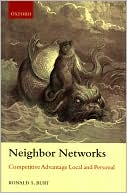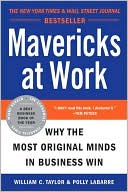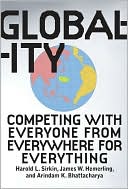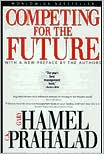Neighbor Networks: Competitive Advantage Local and Personal
Search in google:
There is a moral to this book, a bit of Confucian wisdom often ignored in social network analysis: "Worry not that no one knows you, seek to be worth knowing." This advice is contrary to the usual social network emphasis on securing relations with well-connected people. Neighbor Networks examines the cases of analysts, bankers, and managers, and finds that rewards, in fact, do go to people with well-connected colleagues. Look around your organization. The individuals doing well tend to be affiliated with well-connected colleagues. However, the advantage obvious to the naked eye is misleading. It disappears when an individual's own characteristics are held constant. Well-connected people do not have to affiliate with people who have nothing to offer. This book shows that affiliation with well-connected people adds stability but no advantage to a person's own connections. Advantage is concentrated in people who are themselves well connected. This book is a trail of argument and evidence that leads to the conclusion that individuals make a lot of their own network advantage. The social psychology of networks moves to center stage and personal responsibility emerges as a key theme. In the end, the social is affirmed, but with an emphasis on individual agency and the social psychology of networks. The research gives new emphasis to Coleman's initial image of social capital as a forcing function for human capital. This book is for academics and researchers of organizational and network studies interested in a new angle on familiar data, and as a supplemental reading in graduate courses on social networks, stratification, or organizations. A variety of research settings are studied, and diverse theoretical perspectives are taken. The book's argument and evidence are supported by ample appendices for readers interested in background details.
List of Figures xvList of Tables xix1 Introduction 1People You Know versus the People They Know 2So What? 6Overview of the Book 8Part I Establishing Secondhand Brokerage 172 Process Clues in Network Spillover 19Direct Access to Structural Holes 23Indirect Access to Structural Holes 30Possible Returns to Indirect Access 39Summary 563 Balkanized Networks 59Product Launch Network 59Supply-Chain Organization 72Summary 794 More Connected Networks 80A Human Resources Organization 80HR Returns to Brokerage 83Two Divisions in Financial Services 85Banker Returns to Brokerage 91Analyst Returns to Brokerage 93Conclusions 99Part II Testing the Perimeter 1155 Industry Networks 117Direct Access to Structural Holes 117Indirect Access to Structural Holes 132Conclusion 1426 Closure and Stability 151Social Chaos in Financial Services 153Direct and Indirect Embedding 155Reputation Stability 161Network Decay 171Conclusions 1797 Mishpokhe, Not 192Inside and Outside Brokerage 192Why this Chapter 194Network Diagnostics Indicating a Diversity Problem 195Hierarchy is the Active Ingredient 203Strategic Partners and Partner Networks 208Conclusion 213Part III Exploring Implications 2198 Bent Preferences 221Agency in Networks 221Perception in Network Context 227Network Defines Peers 247Perception Defines the Network 268Summary 279Appendices 281A Measuring the Network 281B Measuring Access to Structural Holes 293C Measuring Analyst Accuracy 305D Industry Networks 308E Means, Standard Deviations, and Correlations 318F Network Weights for the Organization in Figure 8.5 324G Denning Network Peers 329References 366Index 387








